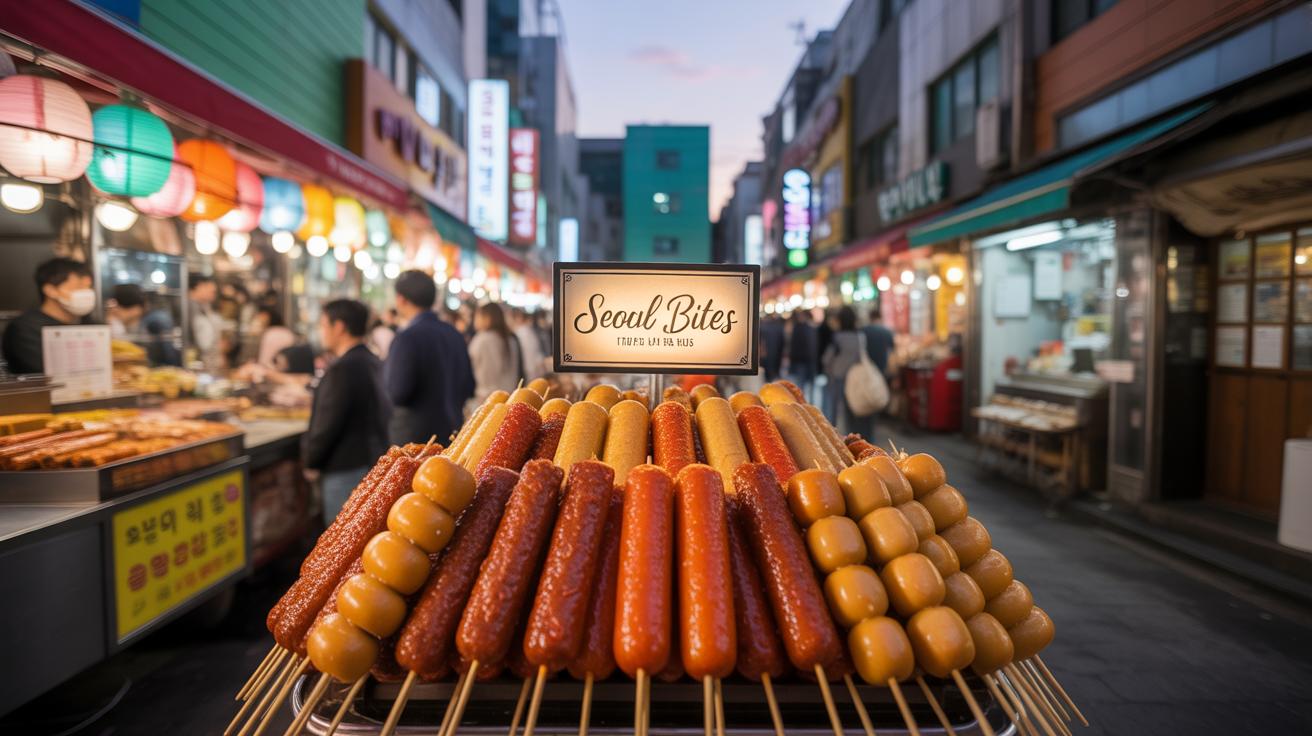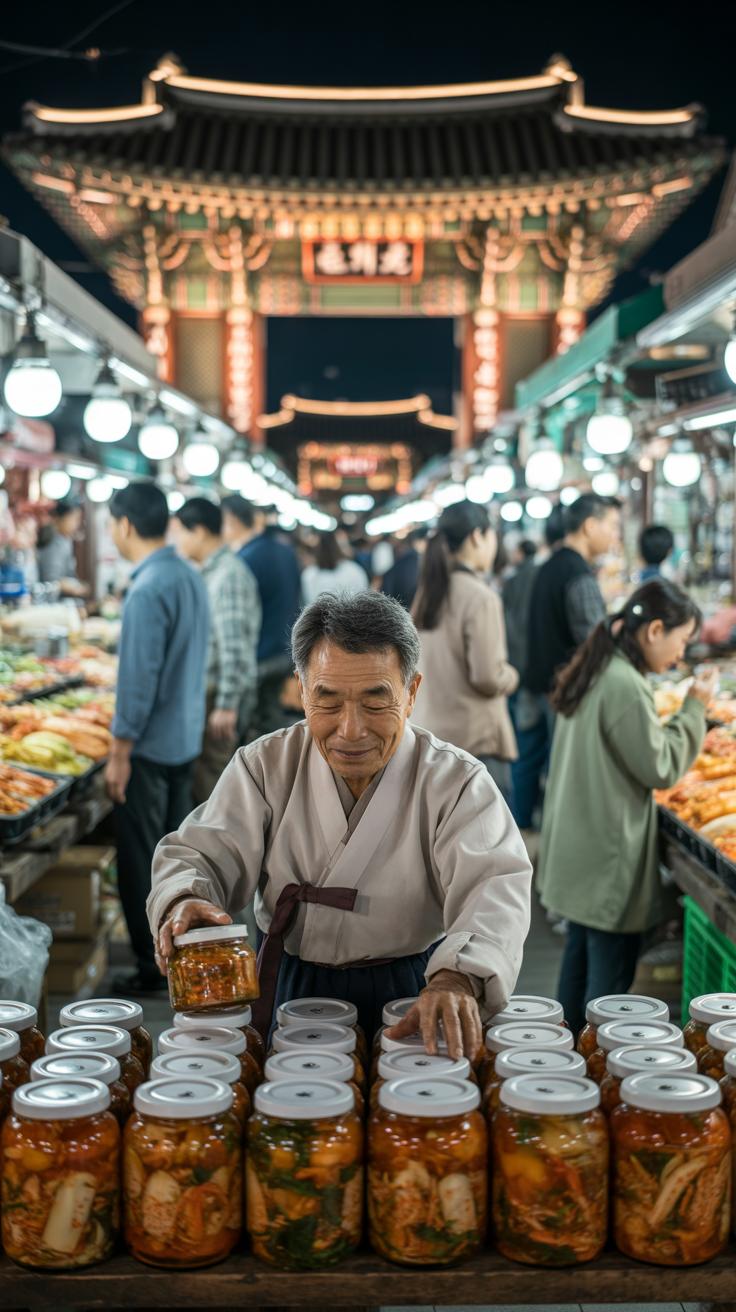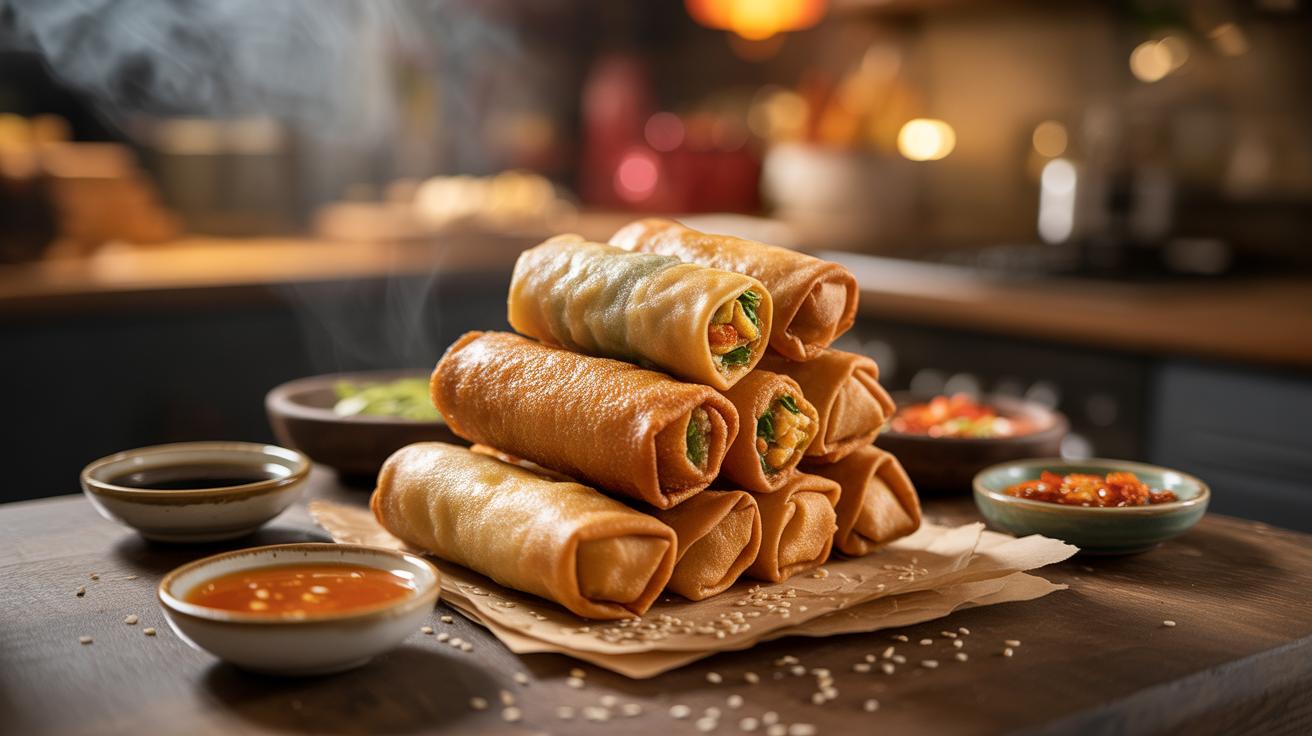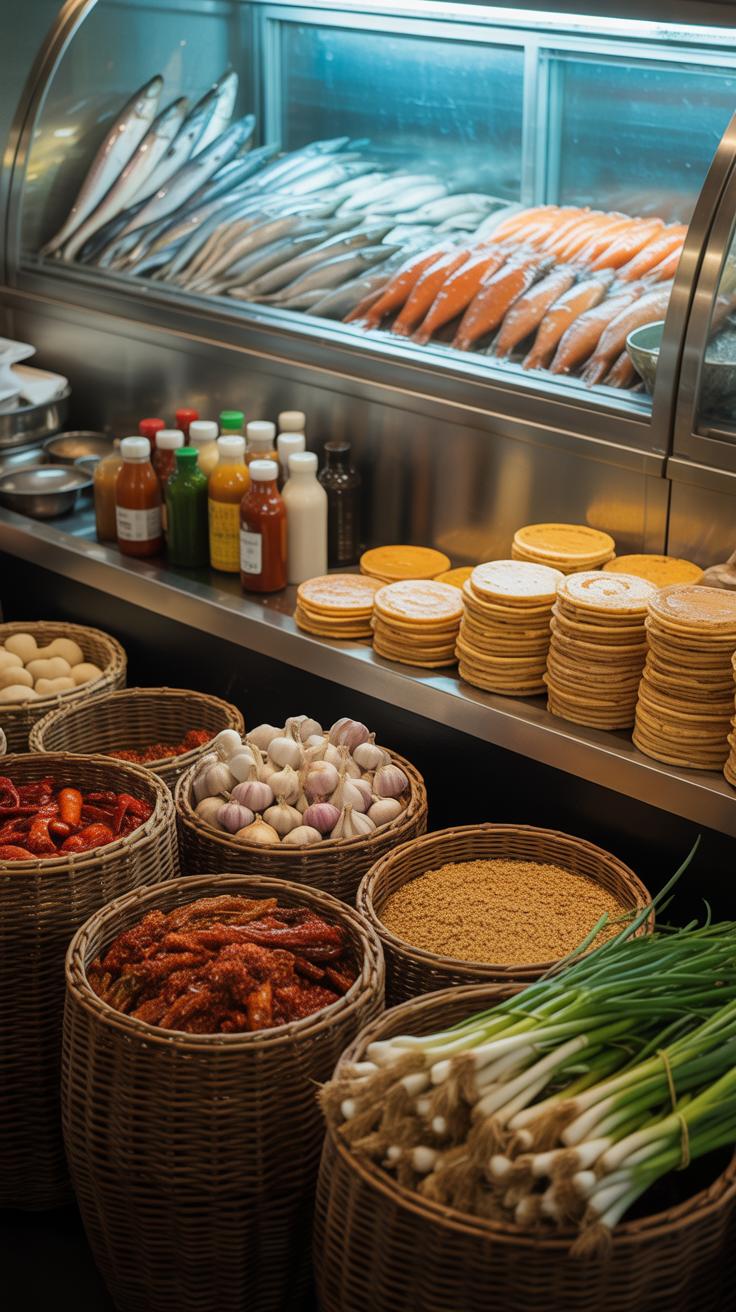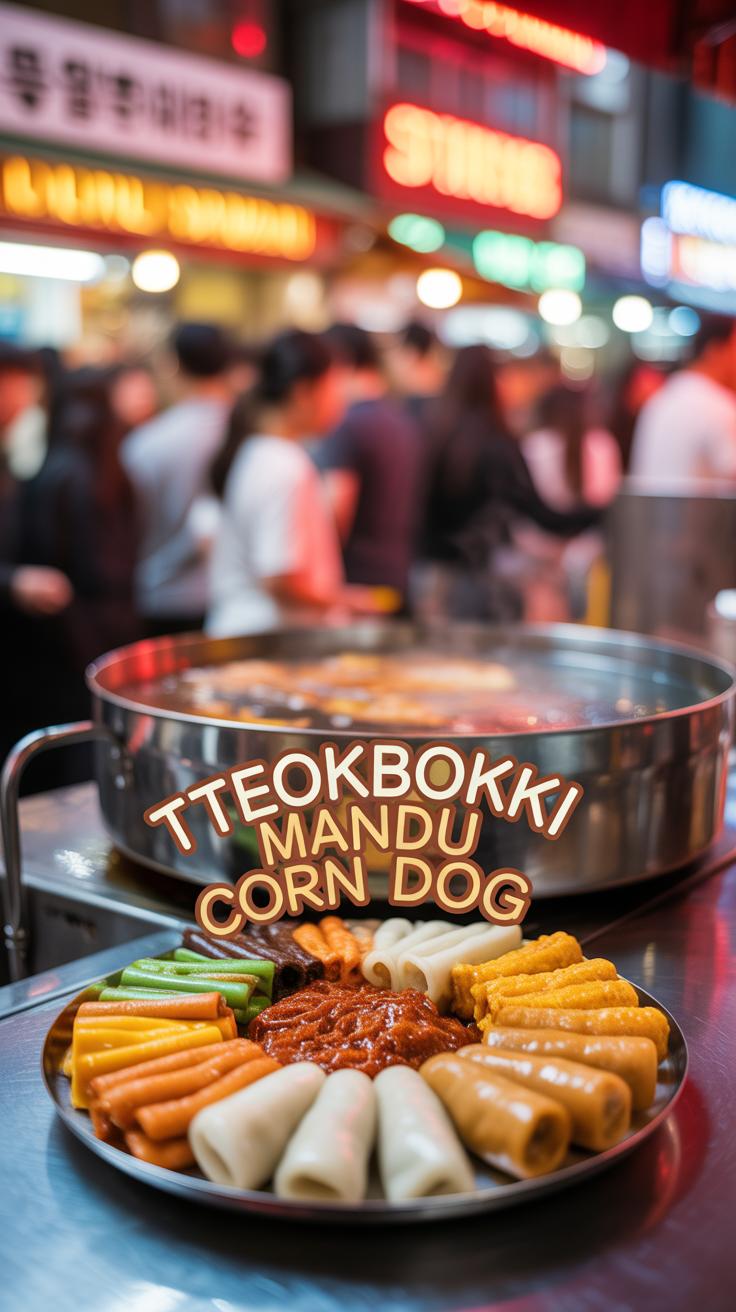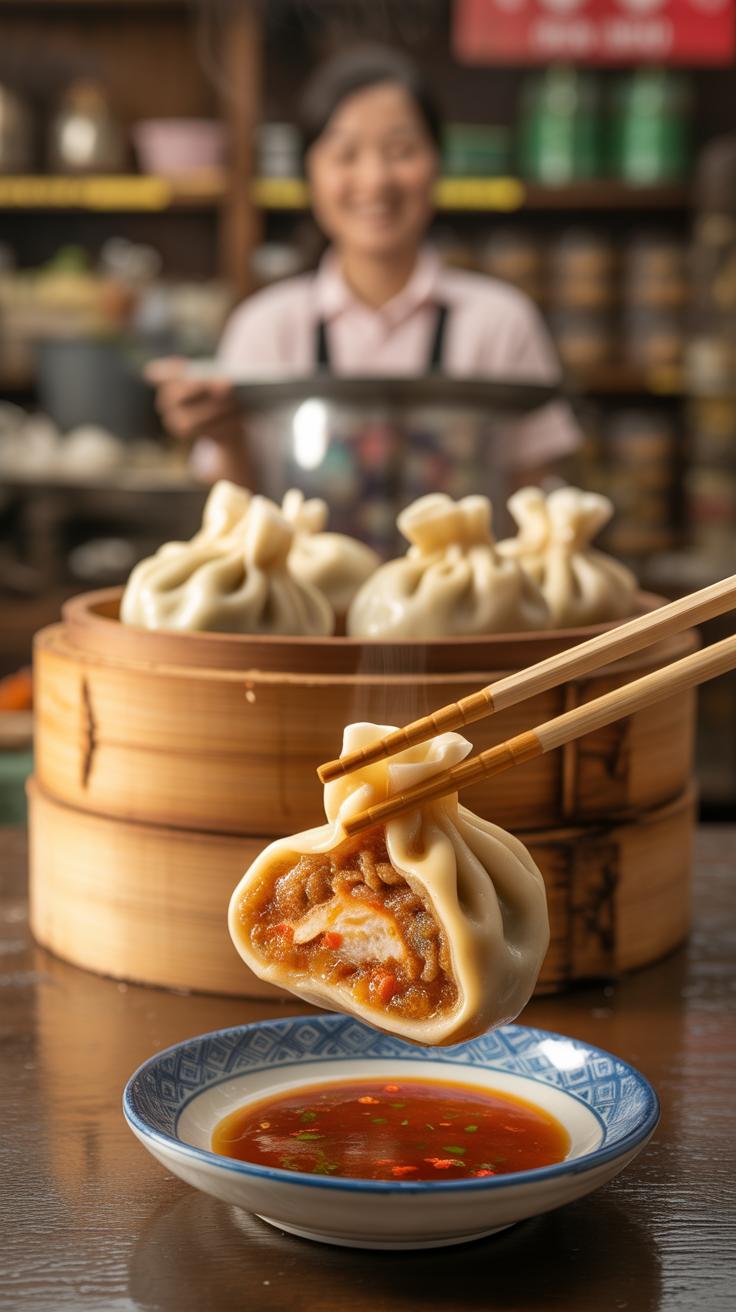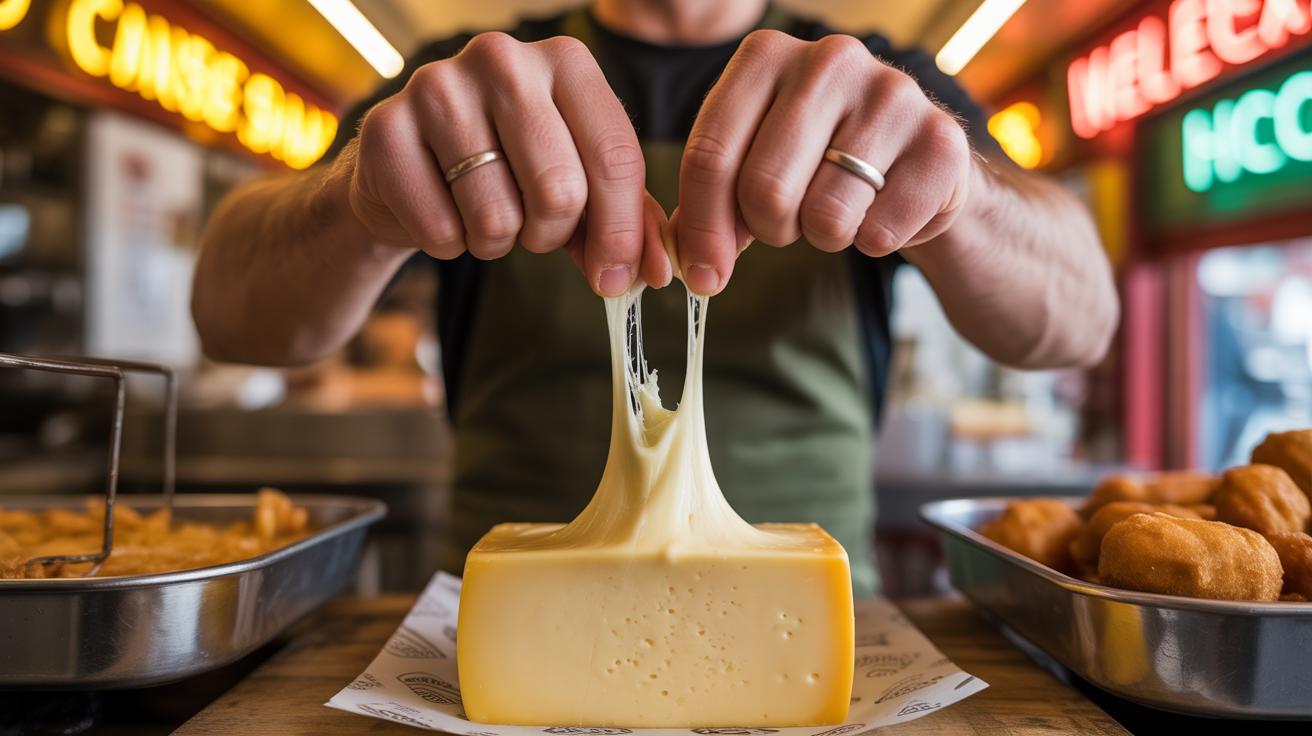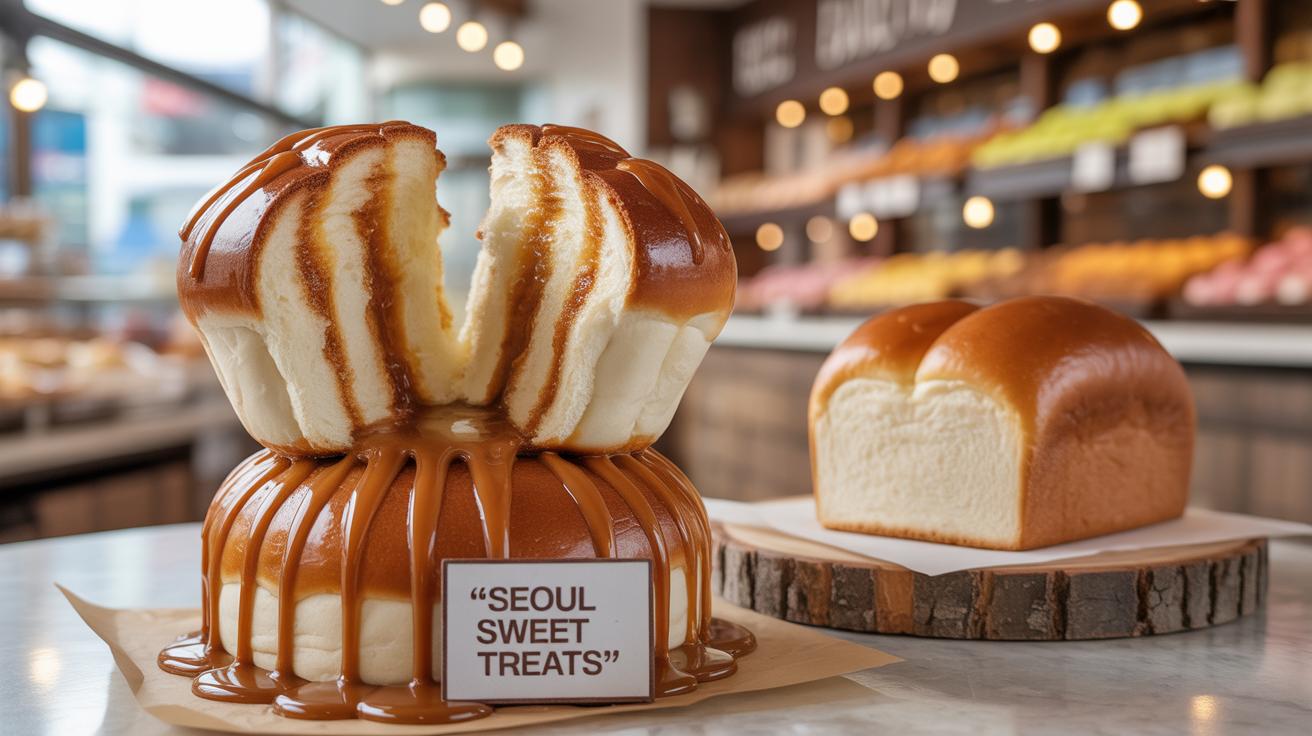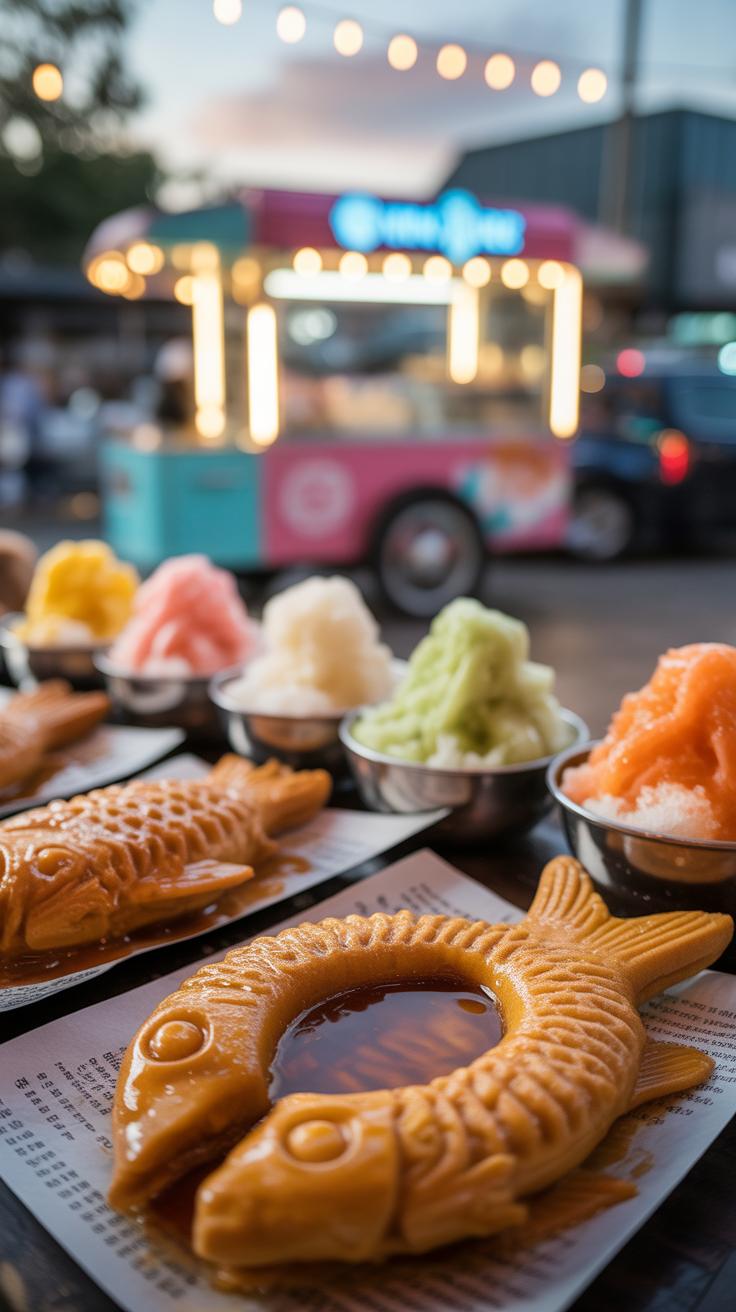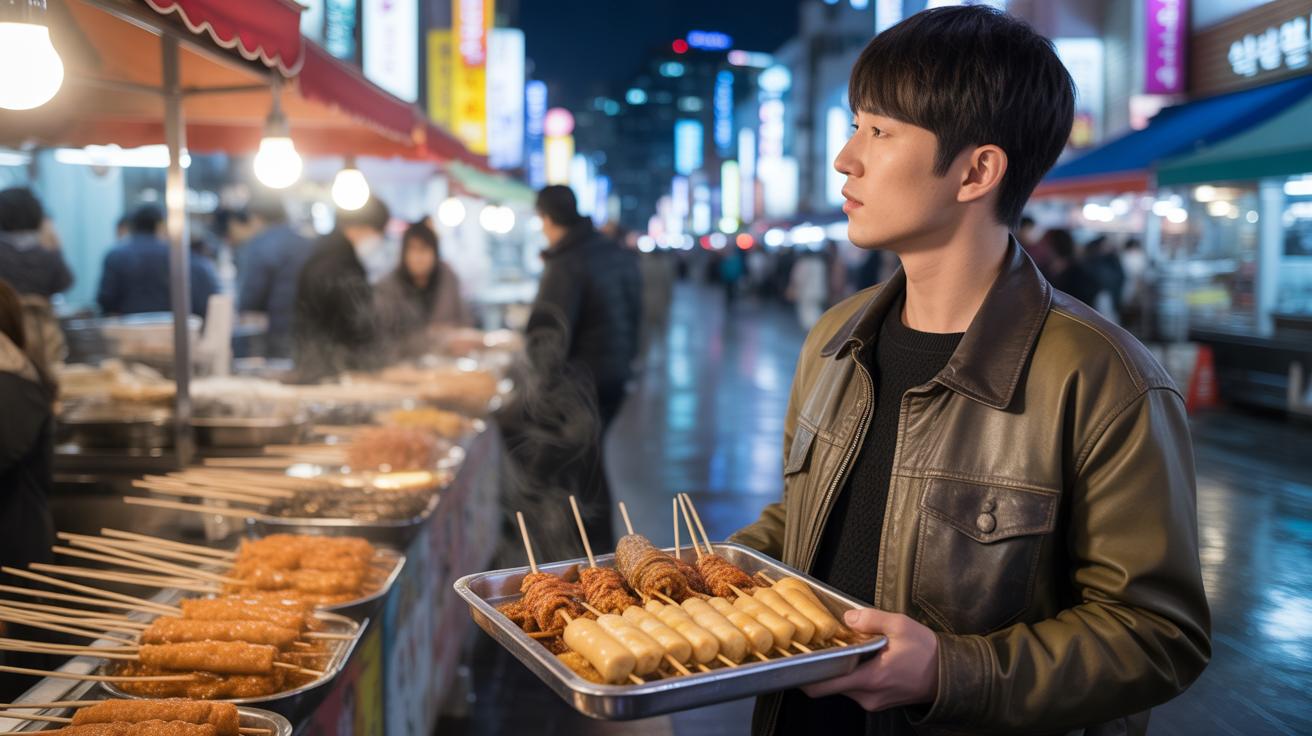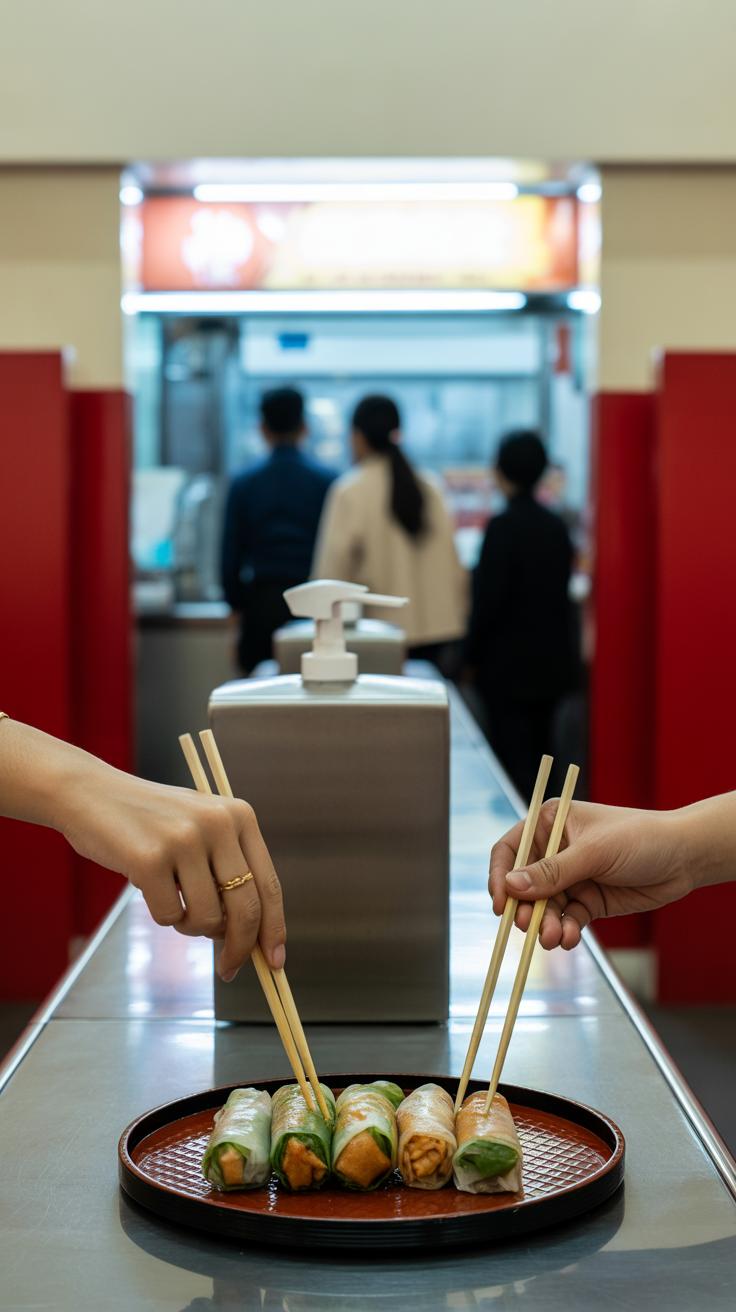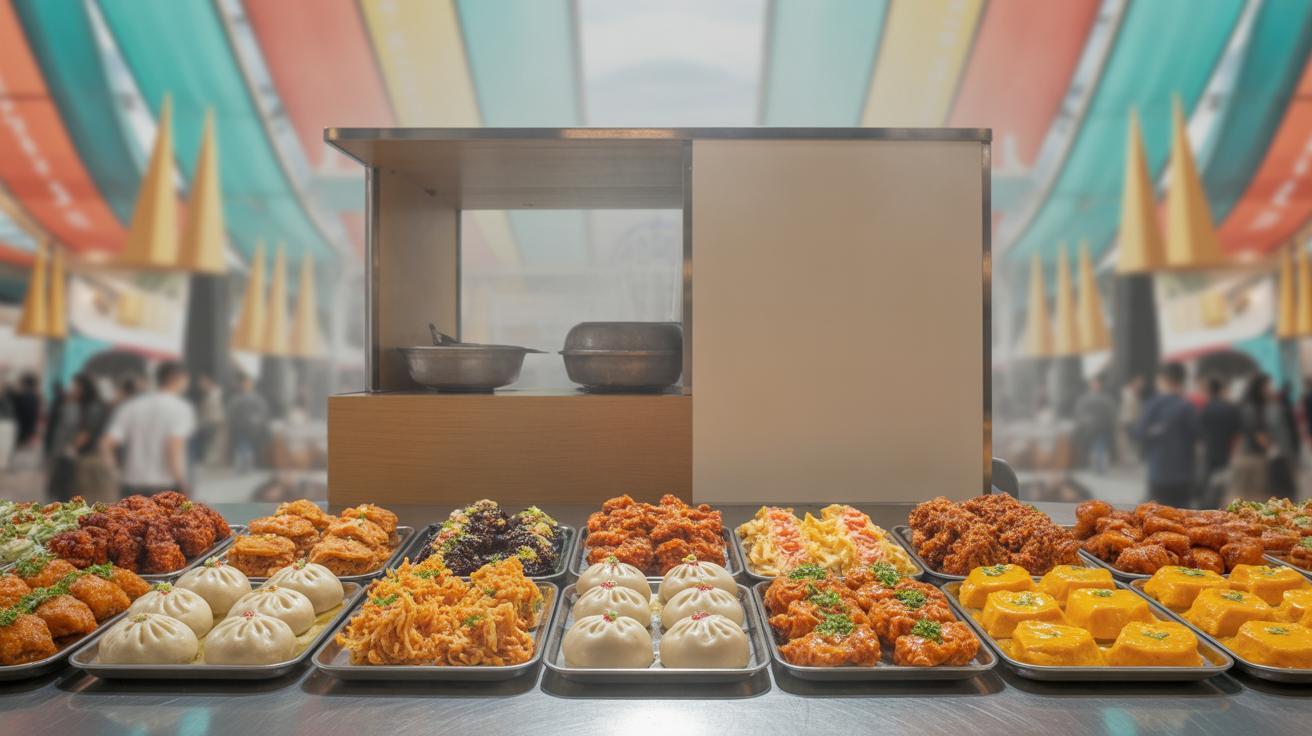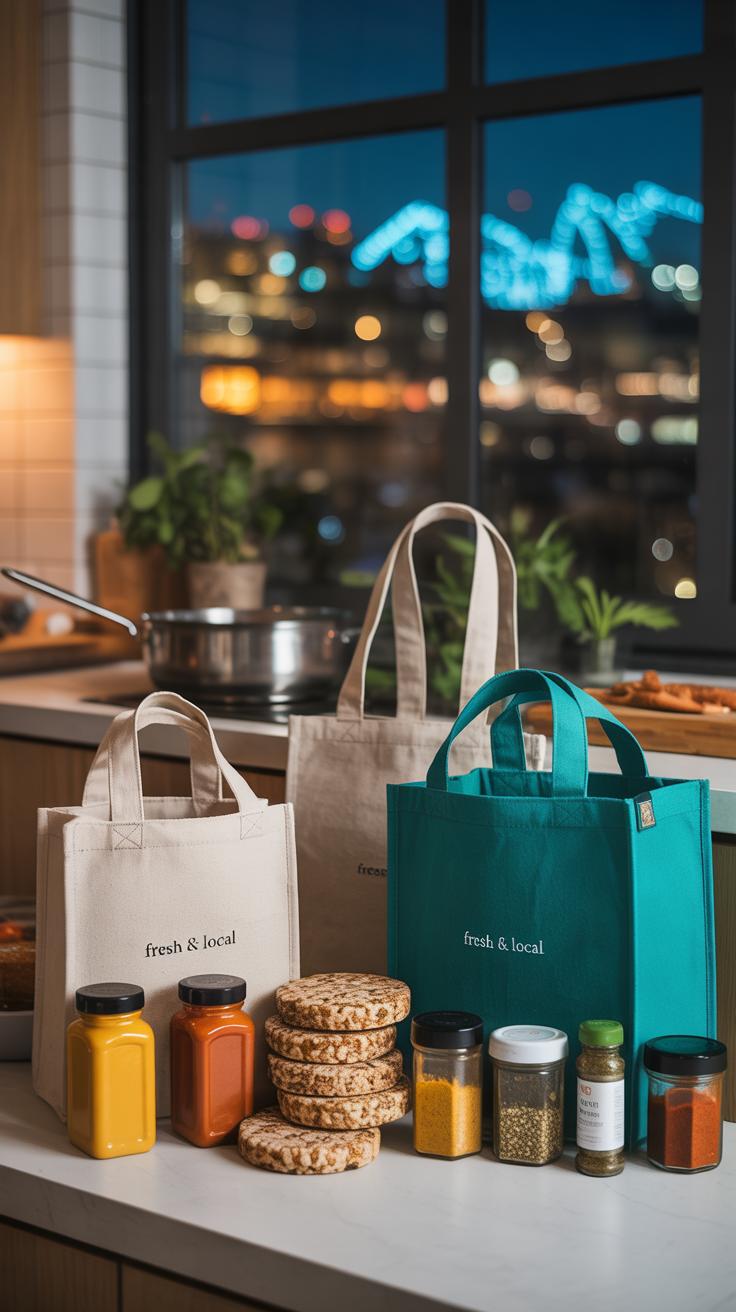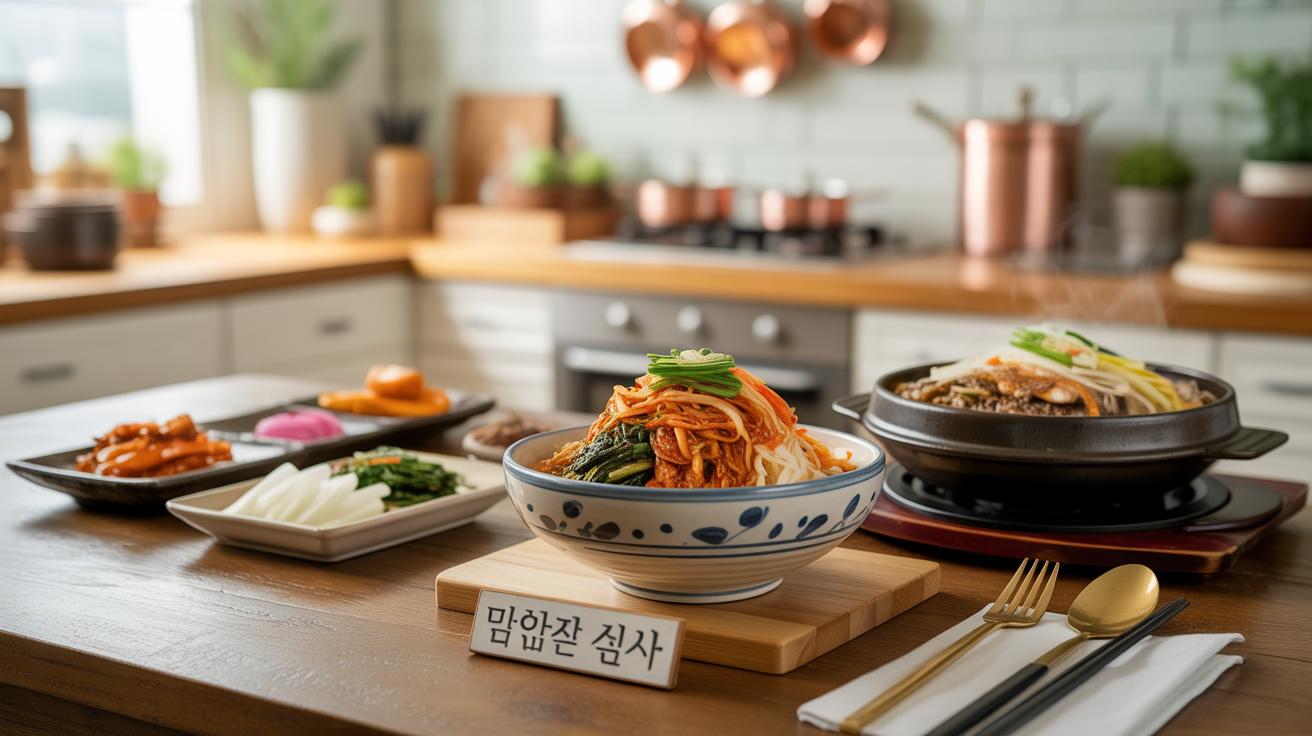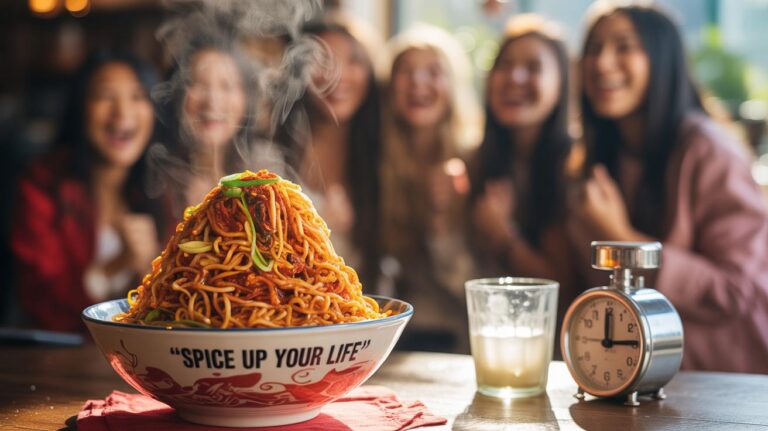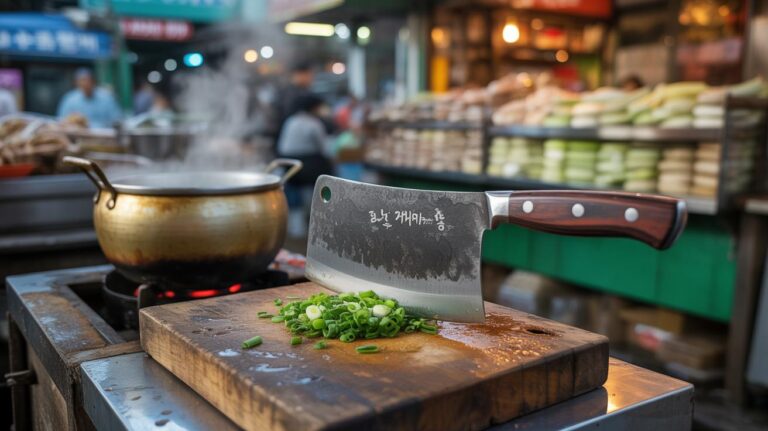Introduction
Korean Food Night Market Favorites You Need To Try offers a glimpse into lively streets filled with tempting smells and tastes. These markets bring together some of the most cherished foods in Korea. They let you enjoy meals that carry the heart of Korean culture, tradition, and flavor.
In this article, you will discover the histories, tastes, and stories behind favorite night market dishes. You will learn why these foods are loved and how you can enjoy them fully. Get ready to take a tasty journey through Korean night market food.
The Role of Night Markets in Korean Food Culture
Korean night markets are more than just places to grab a quick bite. They often act as informal community hubs where locals come together not only to eat but to share moments. It’s common to find groups of friends chatting over spicy tteokbokki or families sampling freshly made hotteok under the glow of market lights. These markets carry a sense of belonging, creating a space where food and social life blend seamlessly.
Supporting local vendors is another key part of their role. Many stalls have been family-run for generations, preserving techniques and recipes that you might not find in modern restaurants. When you buy from them, you’re helping keep that history alive. It’s like tasting a small piece of Korea’s food heritage firsthand.
Interestingly, night markets aren’t just about nostalgia. They also encourage innovation by mixing traditional flavors with street food creativity. Still, at their core, they hold onto the essence of Korean cuisine—simple ingredients, bold tastes, and shared experiences. This balance makes night markets unique, inviting, and essential in maintaining the country’s culinary identity.
Common Ingredients in Korean Night Market Foods
When you wander through Korean night markets, the ingredients behind those vibrant plates often go unnoticed. But if you pay close attention, you’ll see staples appearing again and again—rice, fresh vegetables, and a handful of distinct seasonings that shape the flavor. Rice is everywhere, not just as a side but often as a base or even wrapped into snacks. It’s filling, versatile, and provides a mild backdrop for bolder tastes.
Vegetables, too, play more than just a supporting role. Items like cabbage, radish, and scallions appear frequently, balancing richer or spicier elements. They add crunch, freshness, and sometimes a bitterness that your palate might appreciate more than expected. Their nutritional value quietly complements the indulgence of street food, making it feel less heavy.
Staples Such as Rice and Vegetables
Take tteokbokki, for example—soft rice cakes paired with onions and green vegetables. The rice cakes soak up intense sauces but also offer a chewy texture that feels satisfying rather than empty. Or consider hotteok, a sweet pancake filled with nuts and brown sugar, where wheat flour and sweet fillings mix with occasional bits of vegetables for some balance. Vegetables are rarely standalone; they blend within dishes, driving texture and subtle flavor changes.
Flavor Enhancers Like Gochujang and Sesame Oil
Then there’s gochujang, the red chili paste you can’t miss if you explore night market stalls. It’s spicy but also sweet and fermented, which adds depth. Sometimes you wonder if the heat is what you remember most, or that lingering umami that keeps you coming back for more. Sesame oil, on the other hand, offers a nutty aroma and smooth finish. It’s often drizzled last, a sort of signature touch that lifts whatever it touches.
Other seasonings—soy sauce, garlic, and ginger—round out the profile by bringing salty, pungent, and zingy notes. They aren’t overwhelming but build layers of flavor that make each bite complex. What strikes me is how these ingredients balance indulgence with something nourishing. It’s easy to assume street food is just quick and greasy, but here, these ingredients transform simple snacks into something that speaks of both taste and care.
Popular Korean Night Market Dishes You Should Try
Tteokbokki and Its Sweet-Spicy Flavor
Tteokbokki is one of those dishes you’ll see on almost every Korean night market stall. At its core, it’s made from chewy rice cakes, called tteok, simmered in a sauce that’s both sweet and spicy. The sauce itself usually mixes gochujang, a fermented chili paste, with a bit of sugar and sometimes soy sauce. What’s fascinating is how this simple combo creates a flavor that’s addictive, almost comforting.
Night market visitors seem drawn to it because it’s quick, filling, and packs a punch—but not so fiery that it overwhelms. I remember tasting it for the first time, and the balance surprised me. There’s heat, but it melts into a gentle sweetness that keeps you reaching for more. Many stands add fish cakes, boiled eggs, or green onions, which introduce additional textures and flavors. It’s a dish that invites sharing, too, which makes it perfectly suited for the casual, bustling atmosphere of the market.
Hotteok, the Sweet Korean Pancake
Hotteok is different—this one leans into sweetness and warmth. Imagine a pancake stuffed with a sugary mixture—usually brown sugar, cinnamon, and crushed nuts—then pan-fried until the outside crisps up and the filling melts inside. It’s basically a neat little pocket of comforting sugar, a treat you can hold in your hand as you walk through the crowded market lanes.
What I found interesting is how the dough itself is slightly chewy, giving it a unique texture that complements the gooey filling. It’s a popular evening snack, especially on colder nights, and many people seem to come back for seconds. Hotteok stalls often have a rhythmic pace—flatten the dough, add the filling, seal it, and fry. The smell alone grabs attention, pulling people closer. Maybe it’s the mix of warm spices or just the satisfying feeling of eating something freshly made, but hotteok has a charm that’s hard to resist.
Tasting Dumplings and Mandu in Night Markets
Mandu, Korean dumplings, pop up at nearly every night market stall. They might seem simple at first glance—little parcels packed with filling—but they hold deep flavors that make you want more. You’ll find them steamed, boiled, pan-fried, or even deep-fried, each cooking method giving a different texture and taste. Sometimes they’re served with a dipping sauce, sometimes just plain, letting the fillings shine on their own.
Types of Mandu and Fillings
There’s more variety in mandu than you might expect. Some common types include:
- Gunmandu – pan-fried mandu, crispy on the outside.
- Jjinmandu – steamed, soft and moist.
- Mulgmandu – boiled mandu, typically served in broth.
- Kimchi Mandu – a spicy twist with kimchi mixed in the filling.
Fillings often blend pork, beef, or chicken with vegetables like cabbage, green onions, garlic, and tofu. Sometimes noodles sneak in, or mung bean sprouts. The balance between ingredients shifts by vendor and region, so don’t hesitate to try several versions.
How to Enjoy Mandu at Night Markets
Eating mandu at a night market feels casual but rewarding. Grab a warm one fresh off the grill, dip it briefly in soy sauce or vinegar, and bite carefully—it’s easy to lose the filling! If you spot a stall offering mandu soup, give it a go for a comforting experience. It’s also fun to share a mixed plate with friends, sampling different types side by side. You might find yourself going back for another helping, just because it feels satisfying and quick to eat while exploring the bustling market atmosphere.
Seafood Delights at Korean Night Markets
Seafood holds a special place in Korean night markets. Freshness is key, and many stalls pride themselves on sourcing directly from coastal areas nearby. You’ll find an array of options that capture the essence of the sea in bold yet simple flavors.
Common seafood items include squid, octopus, clams, and mackerel. Squid often appears grilled or fried, carrying a slightly sweet, chewy texture with a smoky char when grilled. Octopus tends to be stir-fried or skewered, its slight firmness paired with spicy gochujang-based sauces packs a flavorful punch. Clams and mussels enliven brothy soups or steamed plates, offering a briny, ocean-fresh taste.
Grilled and Fried Seafood Options
The popularity of grilled seafood here surprises me a bit if you think about it, given the bustling crowds. Still, grilling brings out a deep, earthy aroma hard to ignore. You might see skewers of whole prawns or flatfish grilled over charcoal, sometimes brushed with garlic butter or a spicy glaze.
Fried seafood is another staple—crispy, sometimes battered shrimp or squid rings tossed in light seasoning. What makes these special is the balance between crunch and the natural sweetness of the seafood inside. I remember trying a fried oyster once at a night market and being struck by the warm, juicy burst beneath that crust. It’s this contrast that keeps people coming back.
Unique Seafood Dishes You Might Encounter
Beyond the typical grilled or fried, some stalls offer less familiar dishes. For example, you could stumble upon sannakji—live octopus chopped into tiny pieces and lightly seasoned. It’s known for its chewiness and the almost hypnotic, subtle movement of the tentacles; a sensation not everyone seeks, but definitely an adventure.
There’s also haemul pajeon, a savory pancake packed with mixed seafood and green onions. The combination of crispy edges and tender insides, soaked with soy vinegar, is oddly satisfying. Sometimes you might find grilled sea squirt, which has a somewhat briny and slightly sweet flavor, divisive but popular among locals.
Seafood at Korean night markets is far from one-size-fits-all. The variety, from straightforward grilled fare to rare textures and tastes, challenges you to reconsider what seafood can be. Would you dare to try some of these more unusual options?
Sweet Treats and Desserts to Try in Night Markets
Traditional Korean Sweets
After a hearty meal, a sweet finish often feels just right. Korean night markets offer traditional delights that do more than satisfy your sugar craving—they connect you to a deeper cultural rhythm. Take rice cakes, for example. These chewy, subtly sweet treats come in many forms—like tteok, which you’ll often find steamed or pan-fried. Their texture is unique, a bit sticky yet soft, making you slow down and appreciate each bite.
Then there are honey pastries, simple but comforting. Their golden crusts crackle gently, revealing layers often infused with nuts or sweet bean pastes. You might wonder why these sweets are so beloved. To me, it’s their balance—nothing too overwhelming, just enough sweetness to calm the palate. They’re a gentle punctuation mark, a quiet way to end a lively meal.
Modern Takes on Korean Desserts
Alongside these classics, night markets showcase newer inventions that blend Korean flavors with fresh ideas. For instance, you can find soft serve ice cream dusted with matcha powder or flaky pastries filled with sweetened red bean cream. Some stalls experiment with fusion, like macaron sandwiches flavored with yuzu or black sesame.
These modern desserts invite curiosity. They’re less familiar but somehow fitting. They offer a playful twist that can refresh your dessert expectations without straying too far. Still, I sometimes find myself drawn back to the simpler tastes—maybe because they feel more authentic, or maybe because my sweet tooth can be a bit traditional.
When you’re exploring night market treats, consider mixing the old and new. That way, your sweet ending becomes a small journey of discovery—delicious, surprising, and, yes, pleasantly comforting too.
Eating Etiquette and Tips for Night Market Visitors
When you step into a Korean night market, there’s a certain rhythm to how people move, eat, and interact. It’s a shared space, often crowded, so being mindful of basic etiquette makes the experience better for everyone. For instance, queuing is generally expected, even if lines aren’t clearly marked. Cutting ahead can feel rude, and vendors appreciate patience. Don’t hesitate to wait—it’s part of the charm.
Vendors work fast but appreciate a friendly nod or a simple “thank you.” Politeness goes a long way, especially if you want to ask about unfamiliar dishes or ingredients. Sometimes, gestures or a smile speak louder than words, especially when language barriers pop up. You might find yourself fumbling through orders, but that’s okay; most vendors are patient.
Trying new foods can be a bit intimidating. Consider sharing small portions with a friend so you can taste more varieties without overfilling yourself. Walking slowly allows you to soak in the atmosphere—the sizzling sounds, colorful stalls, and chatter of locals. If you want photos, ask first; some vendors don’t mind, but others prefer not to be filmed during busy times.
Lastly, keep an open mind but trust your instincts. If something looks appealing but smells unusual, it’s fine to pass or return later. Night markets are about exploration, but you don’t have to eat everything in one go. Finding your favorite bite might take a little time—sometimes the first taste isn’t the last or best.
Bringing Korean Night Market Flavors Home
If you crave the energy and taste of Korean night markets but can’t always make it to one, you might find comfort in recreating some favorites at home. The good news? You don’t need fancy tools or hard-to-find ingredients to get close to those bold flavors.
Simple Recipes for Popular Dishes
Tteokbokki, a spicy rice cake dish, is surprisingly simple to make. You’ll need chewy rice cakes, gochujang (Korean chili paste), a bit of sugar, soy sauce, and fish cakes if you prefer. Just simmer the sauce ingredients with water, add the rice cakes, and cook until soft but still a little chewy. It takes about 10–15 minutes. I tried this once with frozen rice cakes, and while it wasn’t perfect, it still hit the spot.
Hotteok, the sweet Korean pancake, can be made with a basic dough of flour, sugar, yeast, and water. Fill it with a mix of brown sugar, cinnamon, and chopped nuts before pan-frying until golden and crispy. The sugars melt inside and create a nice contrast with the slightly chewy batter. The recipe’s straightforward, yet getting the right texture takes some practice.
Where to Find Ingredients Locally
Many Korean staples like gochujang, rice cakes, and dried seaweed are available at Asian markets, even outside Korea. Check the frozen or refrigerated sections for fresh rice cakes. Sometimes, smaller grocery stores carry basics like soy sauce and sesame oil suitable for Korean dishes.
If local options aren’t great, online stores are good alternatives. Sites specialize in Korean groceries, often offering kits for night market treats or bulk spices. Still, buying certain perishables online means planning ahead.
Have you looked around your neighborhood for little markets you might have overlooked? Sometimes Korean ingredients turn up in places you’d least expect, and trying different brands can make a noticeable difference.
Conclusions
Night markets in Korea present more than just food. They offer a chance to experience Korean customs, social life, and flavors in one place. The food you try there tells stories of history, ingredients, and people who cherish their craft.
When you explore Korean food night market favorites, you not only satisfy your hunger but also connect with a deeper cultural tradition. These dishes invite you to enjoy simple but rich flavors that have been passed down through generations. Try these favorites to understand the spirit of Korean cuisine and community.

